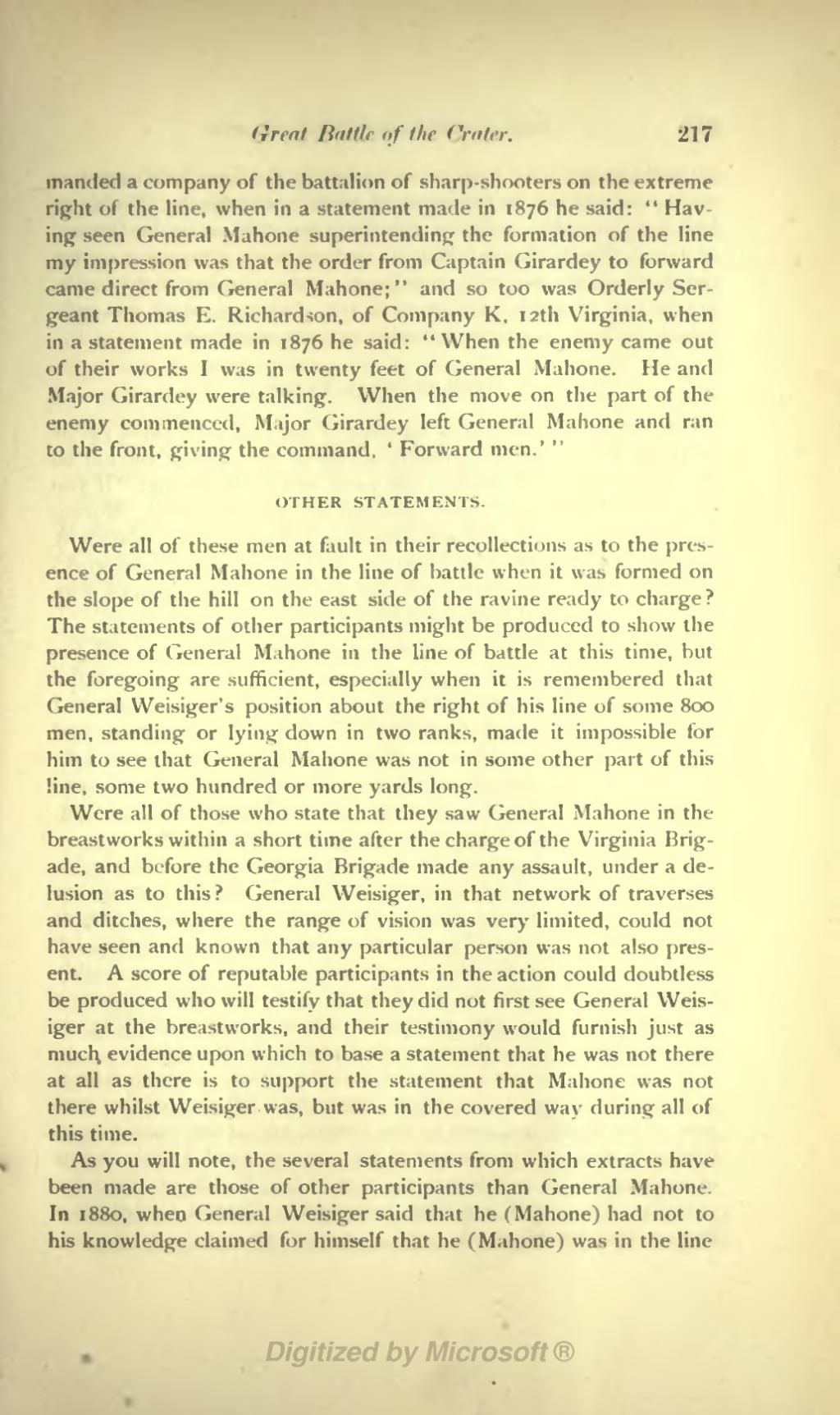<i'r,-'it /!<ii ft, <>i' tin Orai -1\1
mandrd a company of the battalion of sharp-shooters on tin- extreme right ol tin- line, when in a statement made in 1*76 he said: " Hav- ing seen General Mahone superintending the formation of the line my impression \vas that the order from Captain (iirardey to forward ctme direct from General Mahone;" and so too was Orderly Ser- geant Thomas 1C. Richardson, of Company K, I2th Virginia, when in a statement made in 1876 he said: " When the enemy came out of their works I was in twenty feet of General Mahone. He and Major Girardey were talking. When the move on the part of the enemy commenced, Major Girardey left General Mahone and ran to the front, giving the command, ' Forward men.' '
OTHER STATEMENTS.
Were all of these men at fault in their recollections as to the pres- ence of General Mahone in the line of battle when it was formed on the slope of the hill on the east side of the ravine ready to charge ? The statements of other participants might be produced to show the presence of General Mahone in the line of battle at this time, but the foregoing are sufficient, especially when it is remembered that General Weisiger's position about the right of his line of some 800 men, standing or lying down in two ranks, made it impossible for him to see that General Mahone was not in some other part of this line, some two hundred or more yards long.
Were all of those who state that they saw General Mahone in the breastworks within a short time after the charge of the Virginia Brig- ade, and before the Georgia Brigade made any assault, under a de- lusion as to this ? General Weisiger, in that network of traverses and ditches, where the range of vision was very limited, could not have seen and known that any particular person was not also pres- ent. A score of reputable participants in the action could doubtless be produced who will testify that they did not first see General Weis- iger at the breastworks, and their testimony would furnish just as much, evidence upon which to base a statement that he was not there at all as there is to support the statement that Mahone was not there whilst Weisiger was, but was in the covered way during all of this time.
As you will note, the several statements from which extracts have been made are those of other participants than General Mahone. In 1880, when General Weisiger said that he (Mahone) had not to his knowledge claimed for himself that he (Mahone) was in the line
